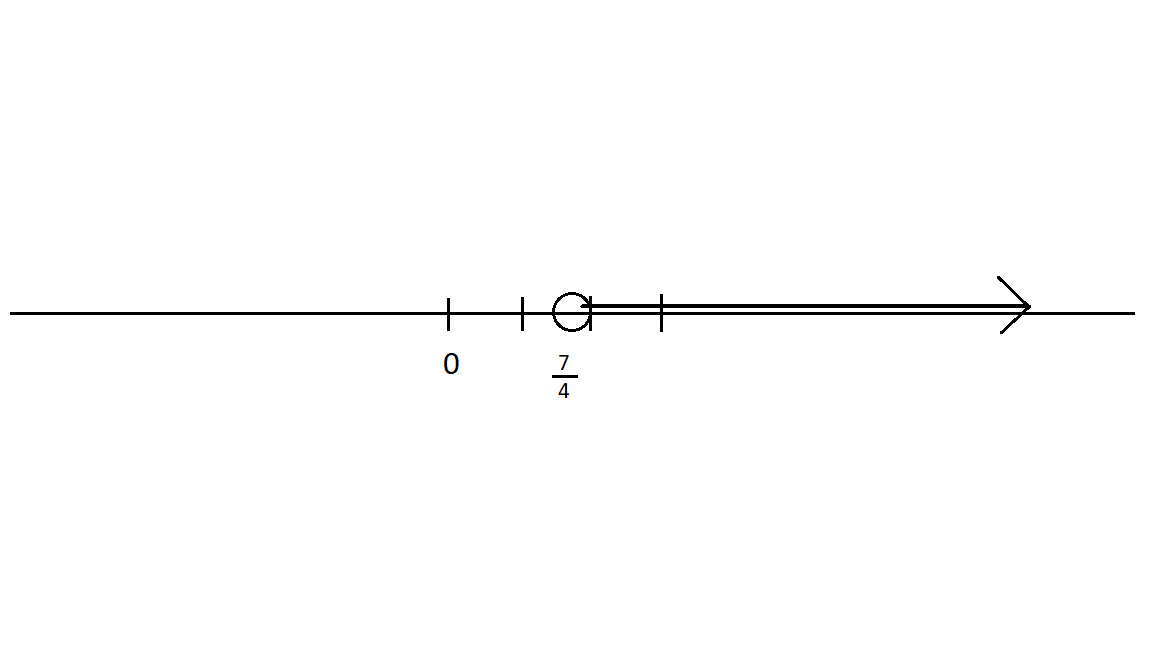How do you express the solution set of the inequality in interval notation and graph the interval of x>7/4?
1 Answer
Please see below
Explanation:
When we are learning this, it is helpful to draw (or at least think about) the graph before we write the interval notation.
Notice that
If we write this with a less than instead of a greater than, it looks like this:
It still says that
Here is my attempt at a picture:

The circle at
When writing interval notation, we use a parenthesis, like this ( to show that the number I'm about to mention is not included in the interval.
(A bracket, like this [, is used to show that the number is included.)
So we know we want to start with
There is no number so big that it is not in the interval. The graph has no end on the right, it just keeps going forever.
We don't want people to think we forgot to write the rest of the interval.
I guess we could just leave a blank space, like this:
The convention in mathematics is to use the symbol
the interval starts at
Because the special symbol

